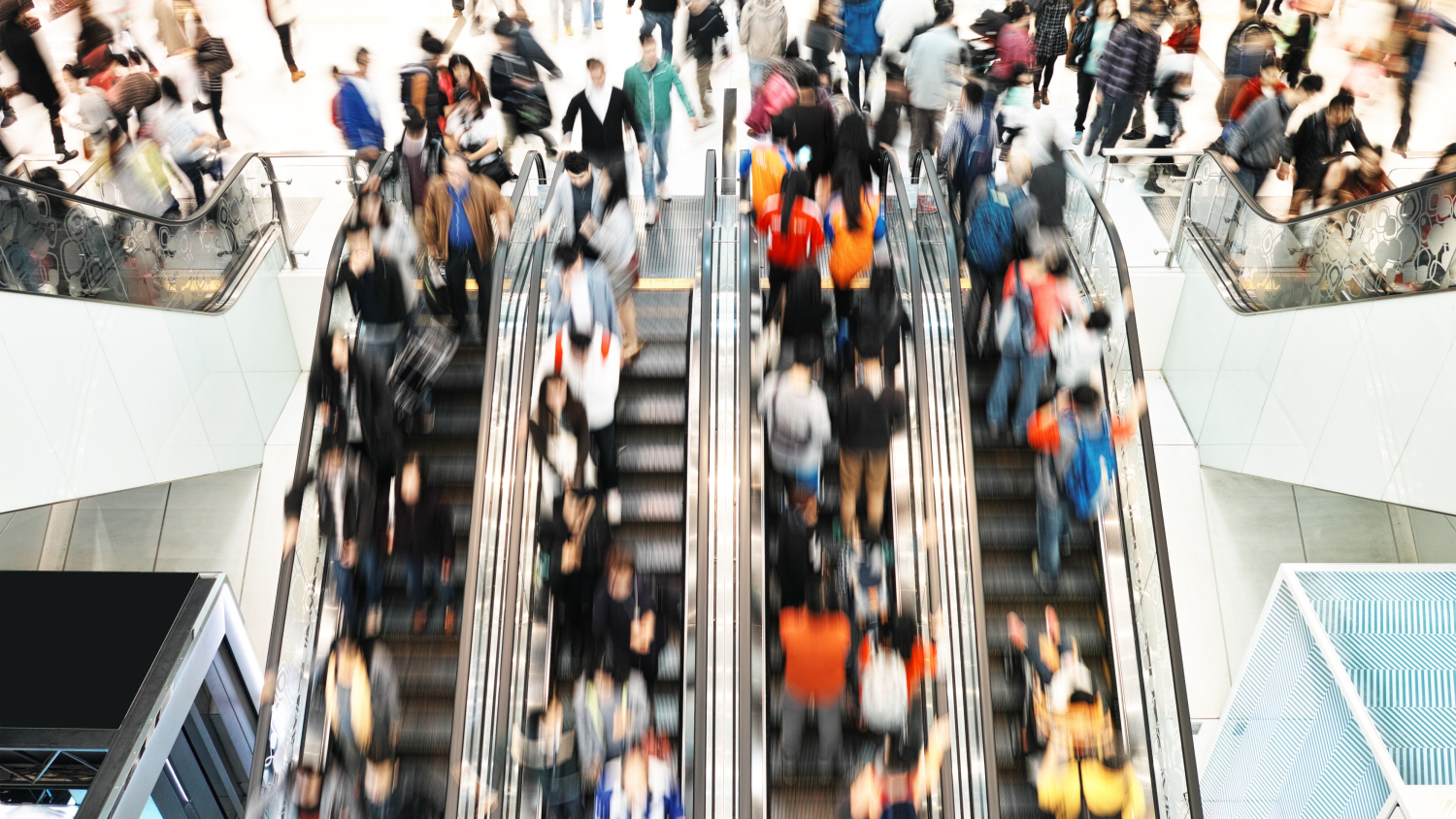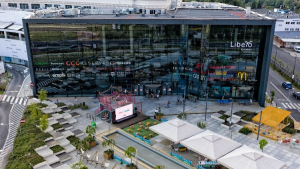
After the extremely difficult year of 2022, the Ukranian retail market has finally managed to improve its performance. Having talked to key market players about trends, tendencies and forecasts, Iryna Nastych summarised the situation in an article prepared by the Ukrainian Real Estate Club for Property Forum.
The experience of 2022
In 2022, the retail market faced huge challenges: security risks, declining demand due to the outflow of people abroad, internal migration, power outages, falling customer capacity, changing supply chains, etc. Some of these challenges have been familiar since the days of lockdowns and quarantines, and the war has added new ones and exacerbated old problems. Nevertheless, these trials have given market operators new skills to survive in extremely difficult conditions. According to Denys Kornuta, Director of the Retail Space Department at Arricano, the experience gained by all market players during the first year of the full-scale invasion can be characterized as follows:
- Flexibility and adaptability to rapid changes in the situation, which cannot be predicted, but must be adjusted to. The task of management is to reduce losses from such a situation, and possibly turn it into an additional advantage.
- Try to work even when it seems impossible: constant alarms, lack of electricity, problems with the supply of goods.
- The speed of making the most effective decisions. It is worth emphasizing here that each of us has begun to take on more responsibility, namely, to develop our managerial skills, as speed requires maximum delegation and trust.
"We can also add the adaptation of the assortment to the economical consumption of the population; preparation of premises and operational teams from a technical and organizational point of view to ensure the smooth operation of stores in military conditions (clear evacuation plans and instructions, provision of premises with power and communication sources, etc.,” says Denys Kornuta.
„Due to these skills we survived in 2022 and entered 2023 with dignity. Despite the serious challenges, trade and retail real estate have withstood, although the year-on-year drop in volumes in national currency terms was -3.2% and in dollar terms -18.4%," comments Evgenia Loktionova, Director of UTG (Ukrainian Trade Guild).
Strengthening of Ukrainian brands and other trends
According to Anna Koryagina, CEO of Nhood Ukraine, the following trends have emerged in the first half of 2023:
- Indexation of rental payments in most cases by a fixed percentage;
- Revision of commercial terms and conditions, revision of existing discounts;
- No improvement in the situation for certain categories of tenants who suffered significantly in 2022 due to the irrelevance of the offer in wartime;
- Active development of national brands, in most cases in an online format, sometimes with 1-2 showrooms or corners;
- The willingness of some international brands to at least consider new projects, which was practically out of the question before;
- Economical consumption;
- Significant dependence of commercial conditions and performance on the geographical factor.
Strengthening the position of Ukrainian brands became possible because of the war. Yevheniia Loktionova explains why: "Along with losses, the war gave Ukrainian clothing manufacturers a chance to take market share from global giants. Back in 2022, Russian brands left the Ukrainian market, and international brands such as H&M and Zara have not yet returned. Therefore, almost all leading Ukrainian brands managed to increase their revenue last year, despite the fall in purchasing power and the emigration of a significant number of Ukrainians. For example, in 2022, Goldi opened 10,000 square meters of new space and continues to expand its network."
Another market trend is the transformation of consumer sentiment. "At first, Ukrainians stopped stockpiling large quantities of food and hygiene products in case of store closures, then the rush for unusual products (flashlights, solar panels, charging stations, generators, stoves, radiators, batteries) stopped," adds Yevheniia Loktionova.
Key indicators of slow recovering
The Retail Well-Being Index (RWBI) was developed in 2020 by the Ukrainian Council of Shopping Centers, which allows for tracking of the level of retail well-being in the dynamics, taking into account such indicators as shopping centre traffic, vacancy rates in shopping centres and rental rates. RWBI has been tracked in a pilot mode since August 2021.
Dmytro Topolskov, Head of the Research Group of the Ukrainian Council of Shopping Centers, Head of the research company Ukrainian Research Bureau (URB), suggests looking at the RWBI values for this particular test sub-sample. This makes it possible to track market dynamics on the same data set.
"We consider the value for the 3rd quarter of 2021 to be the baseline pre-war RWBI indicator. The decline in RWBI in Q4 2021 is due to the new wave of coronavirus in Ukraine. While the worst monthly figures were recorded in March 2022, the worst quarterly figures were recorded in Q2 2022," comments Dmytro Topolskov, "Since then, RWBI has been gradually increasing every quarter. In the 2nd quarter of 2023, the RWBI value even exceeded the indicator of the 1st quarter of 2021 - the quarter of the beginning of the war. However, it is still far from pre-war levels.
The growth of RWBI in the first half of 2023 compared to the previous similar period is influenced by a gradual increase in shopping centre occupancy and rental rates but to a greater extent by an increase in footfall.
The average rental rate for conventional lots offered to tenants is $24 per 1 sqm, excluding VAT, additional payments and discounts that may be provided to tenants for a certain period."
It is worth reminding that since the start of the full-scale project, the owners of the shopping centres have made significant concessions to retailers by offering significant discounts. In 2023, rents stabilized. "The number of discounts has decreased compared to 2022, and today more than 75% of our tenants have terms and conditions that are valid until February 24, 2022," says Denis Kornuta.
"Most shopping centres have indexed rents, so the positive dynamics are observed at least due to this increase. However, it is important to note that the revision of rental rates to return them to the level of 2021 cannot be applied to all categories of activity, because some of them, taking into account the current living conditions, have unfortunately lost their position of demand from potential buyers," adds Anna Koryagina, "Also, the geographical factor of influence on rental rates cannot be ignored. The example of projects that Nhood has in its property management portfolio, as well as those in which we work exclusively as brokers, shows a significant difference compared to the western regions."
In the shopping centres of Western Ukraine, rental rates have hardly changed compared to the beginning of 2022, as no significant amount of new supply has opened there, and in the existing shopping centres there were almost no vacancies and all the space was occupied by tenants with signed contracts.
However, rental rates in Kyiv shopping centres are gradually returning to pre-war levels. About 60% of tenants are already paying their rent in full, another 30% pay at a fixed rate (UAH 26 per $1), and another 10% have individual discounts.
Most property management companies are gradually phasing out fixed rates and individual discounts and switching tenants to full payment.
The average rental rate decrease as of July 2023 is -15% compared to February 2022.
As for the vacancy rate, there is also a positive trend, after a significant increase in the vacancy rate in 2022, there is a gradual return to pre-war levels.
"The significant increase in vacancy in existing shopping malls in Ukraine in 2022 is mainly due to two factors: the total withdrawal of Russian retailers from the Ukrainian market and the closure of international operators' stores until the end of hostilities," explains Yevheniia Loktionova, "As of January 2023, the vacancy rate in Kyiv was 21.5%. This vacancy rate was observed in most regions, except for shopping centres in western Ukraine. However, during the first half of 2023, most international operators gradually resumed their operations, and other operators took over the vacant space of Russian chains due to internal relocation/expansion within the shopping malls, the emergence of new operators for the gallery, change of ownership in the constituent documents to citizens of Ukraine/other countries. Therefore, as of July 2023, the vacancy rate decreased and amounted to 18.9%."
"The vacancy rate in our projects was stable at the technical level, we ended 2022 with a vacancy rate of 1.6% in the group, and now we have 0.9% in the group. This is the result of a balanced rental policy and also proves that our projects are interesting and valuable to our partners. In six months, we have signed lease agreements with 36 stores with a total area of more than 4,500 square meters," Denys Kornuta said.
"We are constantly working to reduce the vacancy rate in our commercial projects, and tenants rotate periodically. On average, in the period from January to June 2023, we managed to increase the occupancy rate by several percent. The average vacancy rate does not exceed 7%," adds Anna Koryagina, "I should also note the existing demand for high-quality warehouse space of various sizes, which also helped us improve performance in several projects.
Footfall was unevenly distributed, and this indicator depends on many factors, including the area of the shopping centre, its format, security indicators and location.
"For example, for large and very large shopping centres of traditional format, the average footfall per 1,000 square meters is 386 people per day, for medium-sized ones - 462, and for small ones - 554," says Topolskov. "It should be noted that such footfall is recorded against the background of a significant decrease in the number of people due to external migration and related factors that deter consumer sentiment during the war. In addition, shopping malls' footfall (especially those located at a short distance from the contact line and the border with Russia) largely depends on the availability and distance to the shelter in case of air raid alerts."
"We observed a positive trend in traffic growth in the first half of the year in all our shopping centres. In regional shopping malls located in cities close to the front line, traffic is recovering more slowly, as air raids, which can last up to 20% of working hours, negatively affect the level of attendance. In contrast, in Kyiv's RayON shopping center, the number of visitors has reached pre-war levels since March," says Denys Kornuta.
According to the data provided by the UTG director, as of July 2023, the average attendance rate is 364 people per 1,000 sqm of GLA.
The recovery in footfall has had a positive impact on turnover. "We compared the figures of the collected turnover for the first 6 months of 2023, the average monthly growth rate is 17.96%," Anna Koryagina shares her observations, "February was difficult with a negative result, but the positive results of March and further gradual growth allowed us to get an average positive trend.
Forecasts: several scenarios
In the second half of 2023, further gradual growth of market indicators is expected. "The decision to reopen stores of such operators as Inditex and H&M in Ukraine will give a bigger impetus to the recovery of the shopping centre market. However, such a decision has not been made yet," comments Dmytro Topolskov.
"We finished the first half of the year with results higher than our expectations, so we have revised the second half of the year taking into account the current parameters. We expect that rental rates will be gradually levelled by demand, the number of discounts will continue to decline, and landlords will become more decisive in carrying out rotations with replacements with more efficient formats. We predict that tenant turnover in the second half of the year will show positive dynamics compared to 2021, depending on the product group. And the vacancy rate will decrease, especially in those shopping malls that are most in demand among tenants," Denys Kornuta shares his expectations.
Of course, the development of retail will depend on the situation at the front and security factors, so market players are considering several possible scenarios. "We must always be prepared for negative development scenarios. Despite the fact that the company is working on five-year forecasts, we are preparing several scenarios. Nevertheless, I would like to point out that despite energy prices, inflation and supply chain issues that continue to cause uncertainty in the economy, as well as among retailers and consumers, the retail sector in the 27 EU countries was able to significantly increase its turnover in 2022. According to a GFK study, last year the retail sector received about 2.83 trillion euros, which is a 6.5% growth in turnover. "The largest increases were recorded in Eastern European countries, all of which had growth rates of more than 9 percent," comments Anna Koryagina, "Communicating with international brands, we also understand that the entry of new brands is a matter of safety and time, but Ukraine does not disappear from the development plans of long-awaited retailers. As for the implementation of new real estate projects in the market, these intentions of some companies have not only not disappeared, but on the contrary, have moved to the first stages of project work, namely the development of concepts and preliminary assessment of potential tenant mixes, so Nhood as a service company has positive expectations and believes in the soonest victory and further reconstruction of the country."
"Despite the war, Epicenter is currently under construction in Kyiv on the site of Nova Liniya on Balzak Street. The construction of KYIVPROEKT City Space is underway. Also, the construction of the multifunctional shopping centre PROSKURIV Plaza has begun in Khmelnytskyi. Given the total and leasable area of 35,000 sqm and 27,700 sqm, respectively, the five-storey shopping and entertainment centre will be the largest in the city.
That is, even in the context of military operations, new shopping centres are being built in areas where there is no hot phase and no risk to the lives of employees. There are many reasons for this, both purely economic and social. After the end of hostilities, Ukraine must quickly revive and become even better. To do this, it is necessary to solve many issues related to infrastructure, and one of them will be the restoration and further development of retail real estate," comments Evgeniya Loktionova.



